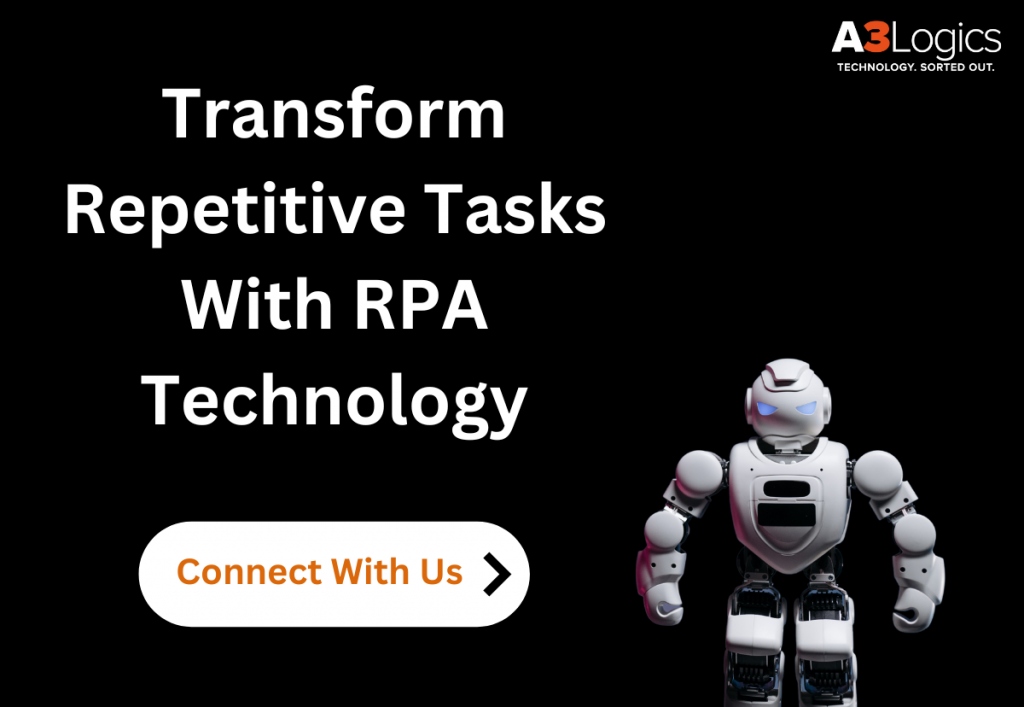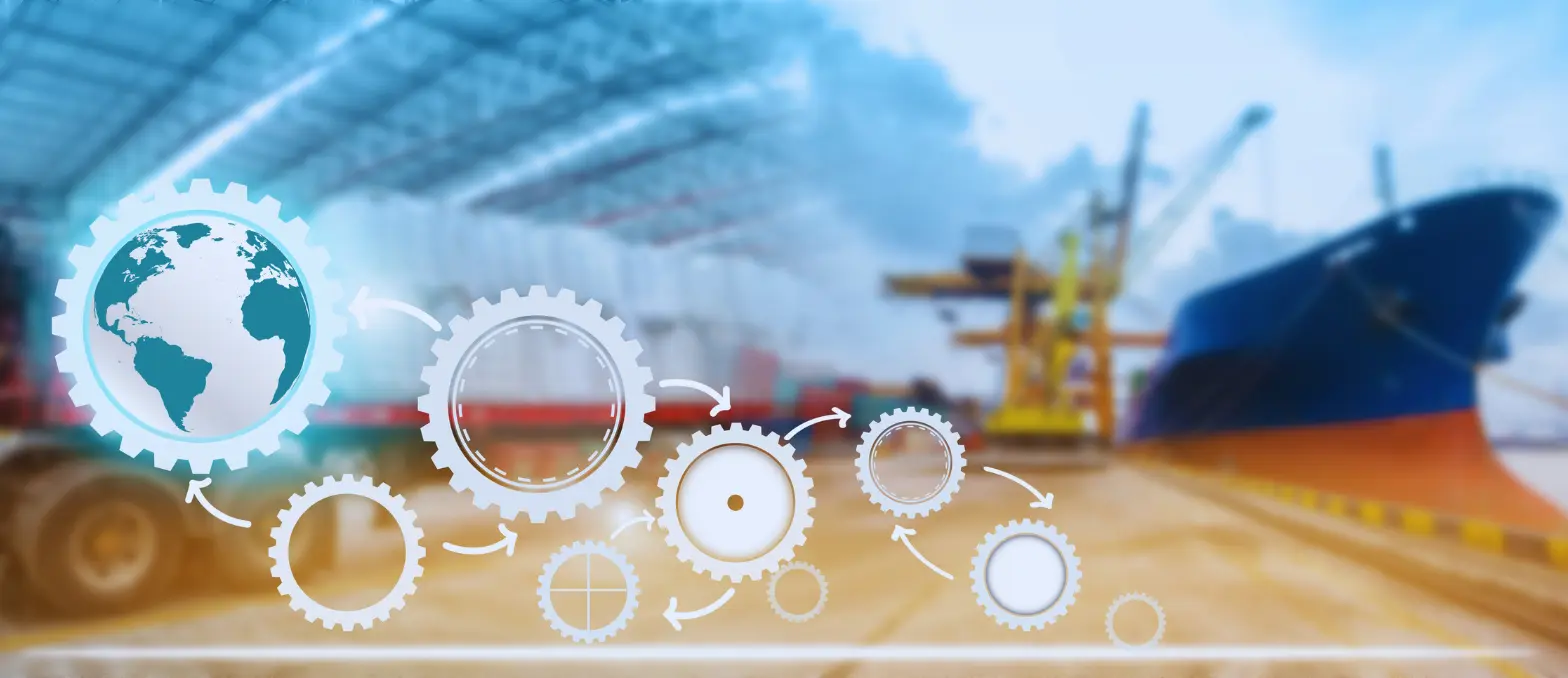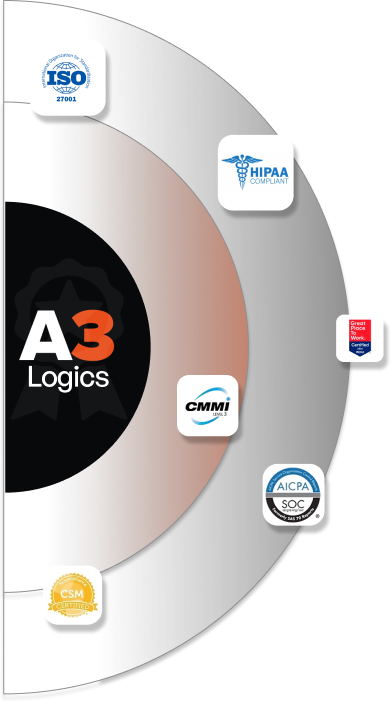Table of Contents
What is Robotic Process Automation?
RPA integrates and completes repetitive tasks between productivity and corporate applications using UI interactions and APIs. Robotic Process Automation Services make the autonomous execution of tasks and transactions across different software systems possible by using scripts that mimic human processes. This type of automation frees human resources to focus on more difficult jobs by using rule-based software that can carry out high-volume business process operations. RPA use cases may help CIOs and other decision-makers increase their return on investment (ROI) from staff while speeding up their digital transformation initiatives.
The Evolution of RPA
Many proponents consider the applications of RPA to be a revolutionary technology. However, there is an ongoing discussion in the world of automation concerning. It is regarding whether RPA constitutes a novel advancement or merely an extension of previous technologies. To understand where you are now, you must first look at where you’ve been. To truly understand RPA as it exists today, we must first understand its predecessors. With most focus on advancements made after the 1990s.
The following are three significant forerunners of robotic process automation:
Software for Screen Scraping
Before the Internet’s inception, screen scraping technology was the first to bridge the gap between incompatible legacy systems and modern systems. More recently, it has been used to extract data from the web on the display layer. Although there are undoubtedly advantages to screen scraping over manual labor, there are drawbacks as well.
For instance, the software’s compatibility with current systems and applications varies, and its dependence on websites’ underlying HTML code makes it challenging for the typical business user to understand. Many firms, therefore, looked for more flexible and adaptive technologies.
Workflow Management and Automation Tools
Although it traces its roots back to the industrial age and to the manufacturing boom of the 1920s, workflow automation became a term that was popularized only in the 1990s.
For example, workflow automation software can assist with order processing by capturing the relevant fields, such as what was ordered and for how much, importing all this to your company’s database, and then notifying those personnel. Among the benefits of this type of software is increased speed, accuracy, and efficiency. It eliminates the need for human data entry and thereby increases order fulfillment rates.
Artificial Intelligence
The term “artificial intelligence” was not coined until 1956 at a symposium held at Dartmouth College, even though robotics had been developed previously. Artificial intelligence refers to the ability of computer systems to perform tasks that often require human intelligence and support.
AI computers can perform jobs such as financial planning and fraud detection, which were traditionally suited to the highest levels of human judgment and decision-making. Even while AI can be costly, its advantages include replacing time-consuming, repetitive manual work and increasing task accuracy and precision.
As the expression goes, the whole is larger than the sum of its parts. But it is the evolution and application of RPA and its ability to combine, enhance, and reimagine specific features of each one of these technologies, rather than those developments and advancements per each of them, a kind of seismic shift in its right-that truly make RPA such a robust technological platform.
Robotic Process Automation: Key Statistics
- Approximately 80% of large organizations are expected to implement some form of RPA by 2025.
- The global RPA market is expected to grow to USD 64.47 billion by 2032, with a CAGR)of 17.1%.
Key Use Cases of RPA Across Industries
RPA plays an important role in various industries. In this section, we will examine some of the key RPA use cases across these industries.
RPA Use Cases in Finance
The finance sector relies heavily on data, so it involves repetitive procedures that are best suited for automation. Tax compliance, fraud detection, and invoice processing can all be automated with the aid of RPA use cases. As a result of this automation, financial institutions will increase accuracy and lower operating expenses, enabling them to focus more on strategic issues in decision-making.
Automated Invoice Processing
RPA streamlines the invoice processing lifecycle by automatically extracting data. This data is taken from invoices, compared to purchase orders, and forwarded for approval. It ensures faster processing times and reduces errors. It also reduces the amount of manual data entering RPA and strengthens supplier relationships. Integrating ERP systems to ensure on-time payments and increased cash flow visibility increases efficiency in operations.
Automated Tax Compliance
These robotic process automation use cases assist in automating tasks related to tax computation, collection of data for tax filing preparation, and filing the tax itself. RPA can manage intricate tax rules and check for accuracy and compliance with local and international tax laws.
Cash Flow Forecasting
RPA provide precise cash flow projections by automatically collecting data and analyzing cash flows from various financial systems. They pick up trends and patterns, thus helping an organization gain insight into investment, expenses, and liquidity management decisions. The proactive approach improves money-related plans and reduces the likelihood of cash shortages.
RPA in Fraud Detection
RPA improves fraud detection by continually monitoring transactions and detecting anomalies in real-time. They can cross-reference data across various systems to raise a flag over suspicious activities, reducing the risk of financial losses. This ensures prompt response to potential threats against the organization and shields it from internal and external fraud.
Financial Planning and Analysis
RPA enables financial planning and analysis by automating data gathering, consolidation, and reporting. It provides real-time insights and increases finance teams’ data-driven decisions. Common RPA use cases includes increased accuracy and free resources for strategic initiatives by eliminating manual processes.
RPA Use Cases in Banking
Efficiency and security are paramount in the banking sector. RPA offers solutions for automating loan processing, customer service, and compliance-related tasks. This technology helps banks enhance customer experiences, improve fraud detection, and maintain regulatory compliance while reducing human error and operational costs.
Automated Loan Processing
Robotic Process Automation help automate the entire loan processing workflow, from document verification to credit checks and approvals. Reduced processing time and increased accuracy allow customers to get their loans approved faster. Compliance improves, and the cost of operations goes down.
Customer Service Automation
Implementing RPA in the customer service process means automating routine tasks. These may include responding to queries, updating customer account information, and processing service requests. Chatbots enabled through RPA support customers 24/7 hours. Enhancing customer satisfaction and free human agents for more complex issues.
Anti-Money Laundering
Top RPA use cases support the anti-money laundering process. This is done by automating the monitoring of transactions and flagging suspicious activities for further investigation. Maintaining detailed records of the process ensures compliance with regulatory requirements.
Credit Card Fraud Detection
RPA use cases in banking enhance credit card fraud detection by analyzing large volumes of transaction data in real-time. This identifies unusual patterns and triggers alerts for potential fraud, minimizing financial losses and protecting customer accounts.
Automated Transaction Monitoring
Automating transaction monitoring with RPA applications ensures continuous oversight of banking operations. It detects anomalies, ensures regulatory compliance, and generates reports for auditors. This reduces the risk of fraud and improves operational transparency.
RPA Use Cases in Healthcare
Healthcare institutions handle vast amounts of patient data and administrative tasks. RPA automates appointment scheduling, medical billing, and inventory management, allowing healthcare providers to focus more on patient care. It also ensures compliance with industry standards and enhances data accuracy.
Patient Appointment Scheduling
These top RPA use cases in healthcare streamline appointment scheduling by automating patient reminders, rescheduling, and cancellations. This reduces the clinic’s administrative workload and ensures maximum healthcare performance. Patients enjoy a smoother booking experience with fewer missed appointments.
Medical Billing and Coding
Automating medical billing and coding will ensure accurate data capture and complete elimination of errors. It will also process claims faster, enhance revenue cycle management, and decrease denials. Thus, healthcare providers can help more patients rather than worry about endless paperwork.
RPA in Inventory Management
RPA use cases in inventory management help manage medical inventory by automating stock tracking, reordering, and reporting. This ensures that essential supplies are always available, reducing waste and improving resource allocation, enhancing operational efficiency and patient safety.
Clinical Trials Data Processing
Clinical trials involve collecting, processing, and analyzing very voluminous data. One of the best RPA use cases is fastening up these processes in real-time, which ensures accuracy and compliance with regulatory requirements. Time-to-market for new treatments is improved, and data integrity is improved.
Automated Telehealth Coordination
Applications of RPA uplift the telemedicine service through the automation of scheduling and follow-up processes, documentation, and reminders. These activities ensure that patients are well coordinated with healthcare providers in terms of smooth access to care and reduce administrative burdens.
RPA Use Cases in Manufacturing
Manufacturing processes require precision, efficiency, and coordination. RPA improves predictive maintenance, quality control, and supply chain management. By automating these critical tasks, manufacturers can reduce downtime, enhance product quality, and optimize production processes.
Predictive Maintenance using RPA
RPA, combined with IoT sensors, monitor equipment performance and predict maintenance needs. This reduces unexpected downtime and maintenance costs, ensuring continuous production. Data-driven insights help manufacturers plan maintenance schedules proactively.
Quality Control Reporting
Automating quality control processes ensures consistent product standards. RPA captures inspection data, generates reports, and flags defects for review, improving product quality and ensuring compliance with industry standards.
Supply Chain Coordination
RPA in manufacturing to optimize supply chain operations by automating order processing, tracking shipments, and managing supplier communications. This ensures timely delivery and reduces operational bottlenecks, benefiting manufacturers with improved efficiency and cost savings.
Product Lifecycle Management
Applications of RPA streamline product lifecycle management by automating data collection, documentation, and reporting. This ensures that products meet regulatory requirements and market demands, reducing time-to-market.
Real-Time Shipment Tracking
RPA provides real-time visibility into shipment status, ensuring timely deliveries and reducing logistical challenges. Automated tracking improves customer satisfaction and optimizes inventory management.
RPA Use Cases in HR
Human Resources services provide the ministry with numerous repetitive tasks that can be automated using RPA. From onboarding a new employee to handling payroll and benefits, robotic process automation in HR eliminates those administrative tasks while making them accurate, freeing up HR teams to work more strategically on initiatives around employee engagement.
Automate Employee Onboarding
Applications of RPA simplify onboarding by automating document collection, background checks, and training schedules. This ensures a seamless onboarding experience and reduces administrative workload.
RPA in Payroll Management
Automating payroll processes ensures accurate calculations, tax deductions, and compliance with labor laws. RPA minimizes errors and ensures timely payments, enhancing employee satisfaction.
Automate Attendance Tracking
RPA tracks attendance data, manages leave requests, and integrates with HR systems. This reduces manual errors and ensures compliance with company policies.
Employee Benefits Administration
Automating benefits administration simplifies enrollment, updates, and claims processing. Employees receive timely information, and HR teams save time on administrative tasks.
Policy Updates and Dissemination
Best use cases of RPA ensure that employees are informed about policy changes through automated notifications. This maintains compliance and reduces the risk of misunderstandings.
RPA Use Cases in Insurance
The insurance industry deals with large volumes of data and complex processes. RPA can automate claims processing, policy administration, and compliance tasks. This improves efficiency, reduces processing time, and enhances customer satisfaction by providing faster service and accurate information.
Automate Claims Processing
RPA accelerates claims processing by automating data validation, approvals, and payouts. This reduces processing time, improves accuracy, and enhances customer satisfaction.
Policy Administration
RPA streamlines policy management tasks such as renewals, endorsements, and cancellations. This ensures accurate records and reduces administrative workload.
Regulatory Compliance Using RPA
Automating compliance tasks ensures that insurance companies adhere to industry regulations. Robotic process automation use cases reduce the risk of penalties and maintain detailed audit trails.
Customer Support Automation
RPA enhances customer service by automating responses to policy inquiries and claims status updates. This improves response times and customer satisfaction.
Automate Premium Calculation
Robotic process automation use cases ensure accurate premium calculations by analyzing risk data and policy details. This improves pricing accuracy and reduces manual errors.
RPA Use Cases in Legal
Legal firms and departments manage extensive documentation and case-related tasks. Applications of RPA helps automate contract drafting, case management, and legal research. By reducing manual effort, legal professionals can focus on strategic analysis. This can improve client services, boosting overall productivity.
Automate Contract Drafting
RPA automates contract creation by generating templates and filling in details based on client data. This speeds up the drafting process and ensures consistency.
RPA in Case Management
Automating case management ensures that legal teams stay organized with up-to-date documentation, deadlines, and case progress.
Automated Litigation Support
RPA assists with document review, evidence processing, and case preparation. This reduces manual workload and improves efficiency.
Legal Research using RPA
Automating legal research accelerates the analysis of case law, statutes, and precedents. RPA tools provide accurate, relevant information quickly.
E-discovery Automation
RPA simplifies the e-discovery process by identifying, collecting, and categorizing relevant documents for litigation. This reduces costs and ensures compliance.
RPA Use Cases in Retail
In the competitive retail industry, efficiency and personalization are key. RPA automates tasks such as vendor coordination, order fulfillment, and personalized marketing. This ensures a seamless customer experience, optimized operations, and better data-driven decision-making.
Personalized Marketing Campaigns
RPA analyzes customer data to create targeted marketing campaigns. This increases engagement and conversion rates by delivering personalized offers.
Automate Vendor Coordination
RPA streamlines communication with vendors, automating order placements, and tracking deliveries. This improves supply chain efficiency.
Dynamic Pricing through RPA
RPA adjusts pricing based on market trends, demand, and competitor analysis. This ensures optimal pricing strategies and maximizes profitability.
Order Fulfillment using RPA
Automating order processing ensures timely shipments and accurate inventory management, improving customer satisfaction.
Automate Product Categorization
RPA organizes and updates product listings, ensuring that customers have an accurate and user-friendly shopping experience.
RPA Use Cases in Government
Supply chains are complex networks that require coordination and efficiency. Use cases of RPA enhance demand forecasting, freight management, and warehouse operations. Automating these tasks ensures timely deliveries, reduces costs, and improves overall supply chain visibility.
Social Benefit Distribution
RPA automates the distribution of social benefits, ensuring accuracy and timely disbursements. This reduces fraud and administrative costs.
License and Permit Issuance
Streamlining the application and approval process for licenses and permits improves efficiency and reduces backlogs.
Public Records Management
RPA automates the management of public records, ensuring data accuracy and easy access for citizens.
Procurement Automation
Automating procurement processes reduces delays, improves transparency, and ensures compliance with regulations.
RPA in Infrastructure Maintenance
RPA helps monitor infrastructure projects, schedule maintenance, and track progress. This ensures timely project completion and resource optimization.
Key Benefits of RPA (Robotic Process Automation)
Applications of RPA offer several and extensive advantages. Software robots can be used to improve your company’s operations in several ways, from staff engagement and customer satisfaction to process speed, accuracy, and cost-effectiveness. The following is a partial list of advantages of RPA:
Customer satisfaction
Your customer service staff will have more time to provide attentive customer service if they are not burdened with forms and tabulations. As a result, customers will have a better experience, and service-level agreements will be easier to meet.
Productivity
Software robots can accomplish the same workaround five times faster than humans. They operate around the clock as well. There will be more ability to complete more work because tasks will be completed more rapidly. Increased productivity can lower costs and make space for faster expansion.
Accuracy
Robots are completely accurate, consistently accurate, and policy-compliant. As you delegate more tasks to robots, you will encounter fewer clerical errors and save more time than you would have spent fixing them. Your cost base and customer satisfaction levels can be greatly impacted by removing the small errors that people commit.
Utilization of resources
By delegating routine jobs to robots, your team can focus on the activities that bring the greatest value to your company. Additionally, because a robotic workforce is entirely scalable, businesses can react to high or low demand periods. That helps reduce HR headaches and improves customer service.
Although RPA will likely alter your labor equation, it does not imply that you will eliminate full-time equivalents. Numerous repetitive, mundane jobs for which your human labor is overqualified will be eliminated. They then have more bandwidth to work on higher-value projects.
ROI (return on investment)
When you turn on your robotic workforce, you will witness a quick return on investment and a generally swift decrease in operational costs. With RPA, you’ll start seeing ROI in weeks, whereas with other IT investments, you’ll have to wait months or even years to see any results.
Decreased difficulties with staffing
Staffing is not easy, particularly in areas of your company where turnover is high, activity levels are erratic, and demand is inconsistent. Robots can be scaled up and down very easily, unlike human workers. They can be implemented considerably more economically and swiftly. Having the appropriate number of employees in the proper moment is much simpler.
Challenges in RPA Implementation and Strategies to Overcome Them
Connectivity to Current Systems
Implementing and integrating AI systems has proven challenging for 45% of businesses that use them. Synchronization with current systems is a key factor.
Existing systems that use various technologies, protocols, and user interfaces must be seamlessly integrated with RPA systems. The technology must coexist with mobile apps, IoT devices, and SaaS systems through APIs, database access, bespoke connectors, middleware, and screen scraping.
Scalability
Automated procedures must change as an organization’s workload and data flow grow. The current robots should be able to handle scalability without sacrificing performance because it is not practical to add more continually.
System Upkeep
Deviating from the pre-programmed procedure once the robots operate could result in errors. The RPA platform should be able to adapt to new technological developments, business needs, and updated legislation. Automation is required for stress testing, data copying to a larger unit, cache cleaning, and assigning the RPA owner.
Management of Change
An RPA platform needs to consider how people and technology evolve. This becomes a chance to review ongoing operations. Senior management support for the platform is essential, as is a clear plan for change management and workflow automation.
Infrastructure for IT
A functional RPA model starts with a strong IT infrastructure. It must possess the processing capacity required to maintain the scripts’ functionality. RPA bots process sensitive customer data, hence these records should be protected with exceptional log credentials.
Further security issues include identity theft, data breaches, system flaws, compromised passwords, and inadequate system monitoring.
Opposition to Change
Existing employees may perceive RPA as dangerous since it may interfere with their work schedules and processes. Consequently, effective team communication is essential. The staff must adopt RPA tools as performance enhancers.
However, if the organizational culture is resistant to change, adopting new initiatives in RPA may become complicated.
Identifying Processes and Setting Priorities
Before deployment, the goals and procedures that require automation must be identified. RPA might perform well for low-value, repetitive tasks like data entry but not for complicated, erratic tasks like cognitive creativity.
Analysis of Costs
RPA may not save money immediately when applied to the most labor-intensive jobs, particularly when those tasks require exception handling, inventiveness, and cognitive capacity. A company needs to understand the breadth and complexity of the job, infrastructure, long-term maintenance, and initial implementation costs, including licenses.
Addressing the Challenges in Implementing RPA
Examine current procedures
Determine which processes require automation, then specify and measure the advantages that automation will offer. Sort these tasks into low, medium, and high complexity categories.
Prioritize the most impactful vital procedures before moving on to medium- or low-complexity tasks.
Create a thorough RPA roadmap
Quantifiable metrics must be established to properly comprehend the results of RPA adoption. Furthermore, a strong plan is essential for scaling, determining which technologies to use, and implementing an RPA strategy as part of a comprehensive roadmap.
Put ROI and savings first
Immediate return on investment will result from automating high-value, customer-facing, and standardized tasks. In the long run, it is frequently more advantageous to concentrate on little tasks rather than automating complete workflows.
Bring all parties involved on board
Employee onboarding is crucial since the objective is to improve productivity, raise earnings, and help staff with everyday duties. Inform managers and staff and consider their opinions. This all-inclusive strategy ensures seamless RPA deployment by promoting departmental alignment and communication.
With careful planning and the selection of suitable RPA solutions, you can attain the intended ROI and expected results. Hiring a knowledgeable RPA consultant can help you navigate this procedure successfully.
Future Trends in RPA
The key question is:
- Where will RPA go?
- How will RPA develop in the future?
From the early days of basic screen scraping, RPA technology has advanced significantly, and it is still revolutionizing how many businesses conduct their operations, particularly in terms of process simplification and scale. Because of the advantages it offers and how simple it is to get them, this excellent technology has gained prominence.
However, the market is anticipated to continue developing even further, and more creative RPA solutions will surface.
According to industry researchers, RPA solutions combined with even more intelligent technology have the potential to be widely adopted across all industries. For instance, technologies like machine learning and cognitive computing entail computer or software learning beyond its initial design, much like a human would react in comparable circumstances.
By learning from and adjusting in response to past actions and experiences, these platforms can handle unexpected mistakes and exceptions in a business process. In contrast to traditional automation, their ability to exercise discretion and creativity in their work will fundamentally enable businesses to automate improved visibility, transparency, communication, and collaboration throughout their value chain.
The advancement of machine learning and the creation of even more intelligent technologies will only be swiftly expedited with the integration of RPA to boost speed and support process automation.
Cognitive automation will soon be a reality. Software robots can currently automate basic, repetitive tasks. With RPA and these innovative platforms, they will soon be able to perform better independently and make sophisticated decisions with minimal programming or assistance. As a result, businesses could become more responsive and agile, which is important in today’s increasingly complicated and global marketplaces.
How does A3Logics Support the implementation of RPA solutions?
A3Logics promises successful RPA implementation with bespoke, end-to-end services tailored to your business needs. We begin with a detailed consultation to identify prospects for automation and design customized RPA solutions and Artificial Intelligence Development Services that could fit seamlessly into existing systems. Our scalable, future-ready frameworks ensure robust security and compliance, ensuring that all data is secure and industry regulation is thoroughly followed.
Comprehensive training and change management empowers your team to handle RPA workflows effectively. With continuous support and performance monitoring, A3Logics optimizes your RPA environment for efficiency, maximizing ROI, and establishing long-term success in digital transformation.
Conclusion
Significant advantages of robotic process automation include higher productivity, lower costs, better accuracy, scalability, and improved customer satisfaction. Businesses must, however, overcome obstacles such as limited cognitive capacities, maintenance, change management, integration complexity, and implementation costs. Knowing these advantages and difficulties can help businesses decide whether to use RPA to revolutionize their operations.
FAQs About Robotic Process Automation (RPA)
How to Choose the Right RPA Platform?
Choosing the right RPA platform requires evaluating several factors, such as scalability, ease of use, integration capabilities, and vendor support. It’s essential to align platform capabilities with business goals, assess security features, and test how well the platform integrates with your IT infrastructure and processes.
Why is RPA Essential for Future-Ready Businesses?
RPA is essential for future-ready businesses because it enables digital transformation by automating repetitive tasks, allowing employees to focus on higher-value activities. It boosts efficiency, reduces operational costs, enhances accuracy, and ensures better compliance, which are all crucial for staying competitive in a rapidly evolving market.
Can RPA work with AI technologies?
Yes, RPA can work with AI technologies. By integrating AI, particularly machine learning and natural language processing, RPA can handle more complex tasks such as decision-making, pattern recognition, and understanding unstructured data. This combination is often referred to as intelligent automation (IA), which enhances RPA’s capabilities by enabling the automation of more intricate and cognitive tasks.
How does RPA enhance compliance?
RPA enhances compliance by automating manual, rule-based tasks consistently and accurately. By removing human error, RPA ensures that regulatory requirements and industry standards are met. Additionally, RPA logs all activities, providing an audit trail that makes compliance easier to track and verify during audits, reducing risk.
How does RPA differ from traditional automation?
RPA differs from traditional automation because it does not require deep coding or heavy IT involvement. Traditional automation is often tied to specific systems or processes and typically requires complex configurations. In contrast, RPA uses software robots that can operate across various systems and applications without significant changes to the existing infrastructure, making it more flexible and scalable.
What are the key components of an RPA system?
The key components of an RPA system include the RPA bot (which carries out the tasks), the control center (where bots are managed and monitored), the development environment (where bots are created), and the orchestration layer (which ensures the bots are properly coordinated). These components work together to automate workflows, manage tasks, and track performance.
Can RPA help reduce costs? If so, how?
Yes, RPA can help reduce costs by automating repetitive and time-consuming tasks, thus reducing the need for human labor. This leads to fewer errors, faster processing times, and operational efficiency. By streamlining operations and reducing manual intervention, RPA also minimizes the risk of costly mistakes and regulatory fines, driving long-term cost savings.






